“He WAS music. His whole being resonated music": Remembering ELP's Keith Emerson and his legendary rig
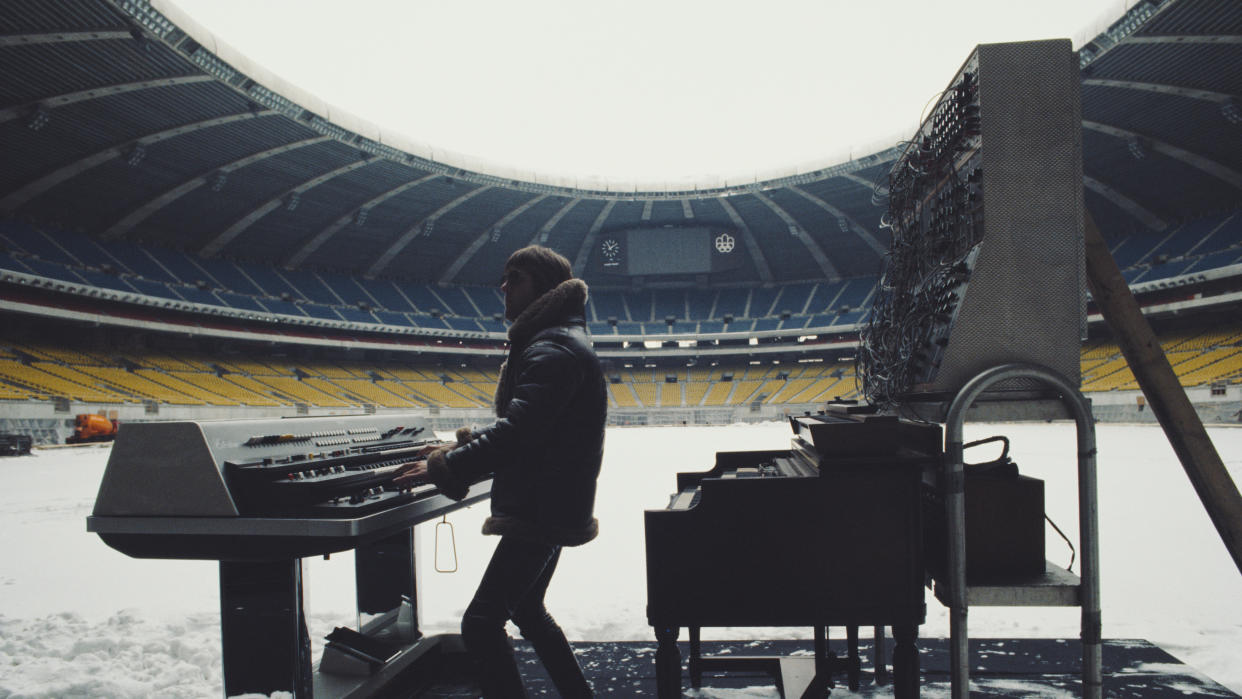
- Oops!Something went wrong.Please try again later.
Whenever anyone discusses rock keyboard players, one of the first names mentioned is always Keith “Emo” Emerson.
In 1967, he was a founding member of The Nice, but he’s best known as one-third of the English progressive rock power trio Emerson, Lake & Palmer. ELP was one of the original so-called supergroups, selling an estimated 48 million records and filling stadiums around the world. To many musicians, Keith’s mammoth Moog modular system (dubbed “the world’s most dangerous synth”) is almost as recognizable as the man himself.
Read more
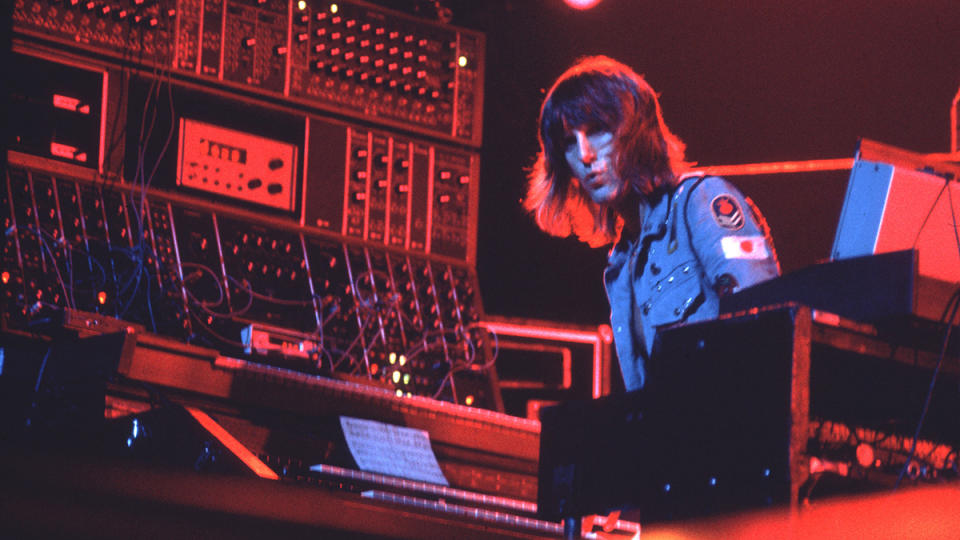
Alongside bassist and vocalist Greg Lake and drummer Carl Palmer, Keith combined dazzling chops, legendary showmanship, and classical music influences to create a groundbreaking sound and spectacle destined for commercial success.
Throughout the entire 1970s, the results were hit songs like “Lucky Man” and “From the Beginning” and bestselling albums such as Tarkus, Brain Salad Surgery, and the live LP, Welcome Back My Friends to the Show that Never Ends ~ Ladies and Gentlemen.
In later years, Keith formed and performed in other ensembles. He also pursued a solo career that included scoring films such as 1981’s Nighthawks. Although ELP reunited in 1991, released two new albums, and occasionally toured until they finally dissolved in 1998, they made their final one-off appearance in July 2010 at London’s first High Voltage Festival.
Unfortunately, the years took their toll on Keith’s health and his phenomenal playing skills. Depressed and overmedicated, he tragically died in March 2016, the victim of a self-inflicted gunshot wound.
Keith Emerson was arguably the greatest showman that rock music ever produced. His incredible onstage shenanigans during ELP performances would be scarcely believable if not for YouTube videos as evidence.
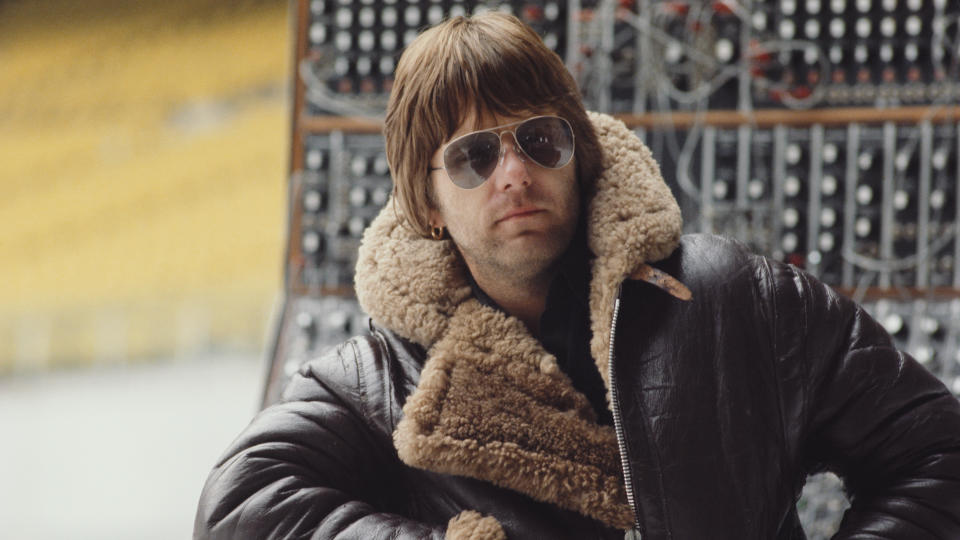
On certain occasions, Keith and his full-sized concert grand piano were hoisted into the air and spun 360 degrees end-over-end as he played without missing a beat, before landing safely back on the stage.
During many concerts, Keith aggressively pounced on his Hammond L-100, tilted it up on one corner, viciously stabbed the keys with knives, and shoved the organ in every direction while making it screech and howl. (When I saw him do that in Atlanta in 1973, it brought down the house.)
He also had a Moog ribbon controller that doubled as a pyrotechnics launcher. Longtime Moog Music engineer August Worley told me, “I designed a sequenced firing controller embedded in the Moog 1150. After starting the sequence, it fired four pyro devices called gerbs in three-second intervals. He had a lot of fun with that thing.”
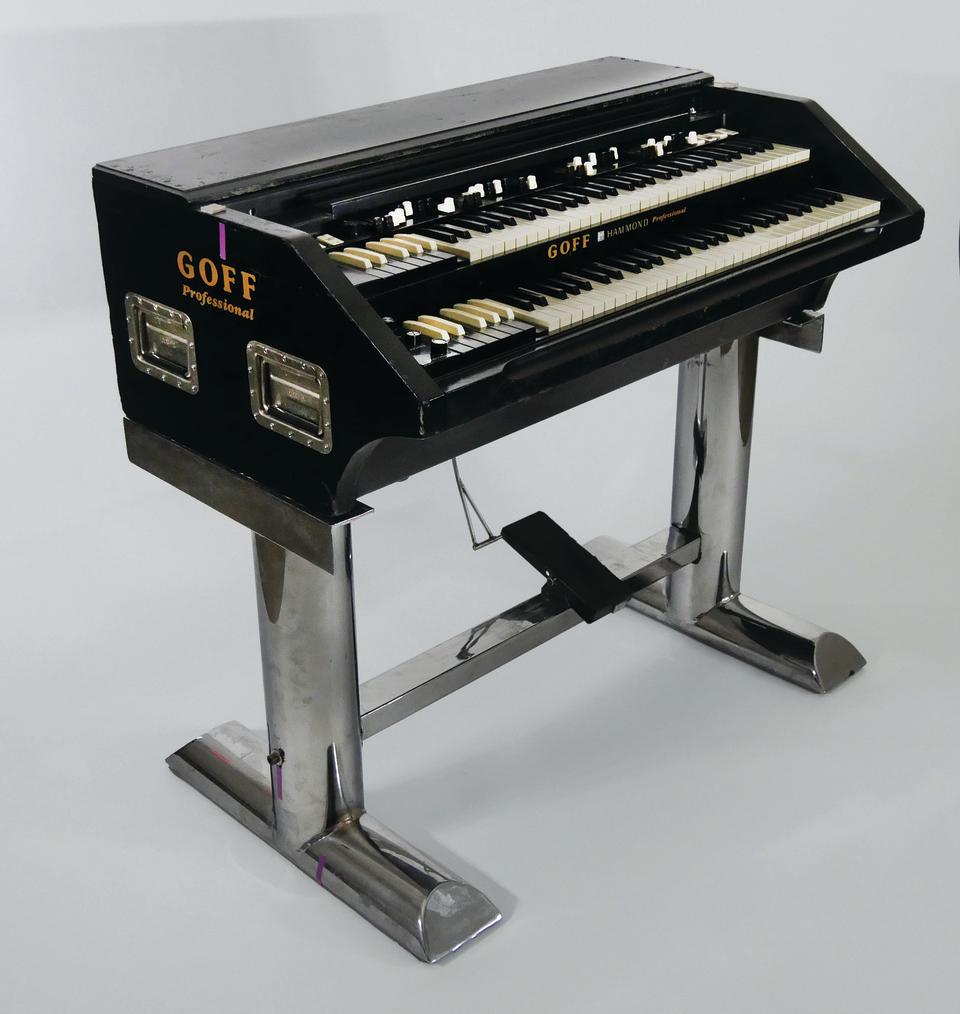
An Arsenal of Instruments
Old synths home
In 2018, the non-profit organization EMEAPP (The Electronic Music Education and Preservation Project) began its mission to find and collect Keith’s most historically significant instruments, aiming to preserve them for future generations.
Located on the outskirts of Philadelphia, Pennsylvania, EMEAPP had already collected an enormous collection of stuff that once belonged to Frank Zappa, The Who, Queen, Neil Young, and many other celebrated names from the rock music sphere.
Although Keith played an assortment of keyboards, the three cores of his sound were the piano, the Hammond organ and the Moog modular synthesizer. His Moog was a gargantuan and legendary synth that became the single most famous keyboard instrument on Earth.
Keith’s celebrated synth began as a fairly substantial Moog model 1CA for playing leads and solos. His particular modular system was originally designed and built for the historic final performance in the “Jazz in the Garden” series at the Museum of Modern Art in 1969. It was one of the first and only modular synths with partial preset memory that could recall essential parameters.
It eventually grew into an enormous and unwieldy beast that could simultaneously handle drones, ostinatos, and whatever else Keith needed to produce ELP’s music in the studio and reproduce it onstage. In order to play live, new songs often required additional modules because he had to quickly launch from one song to another without hesitation, without sacrificing other modules.
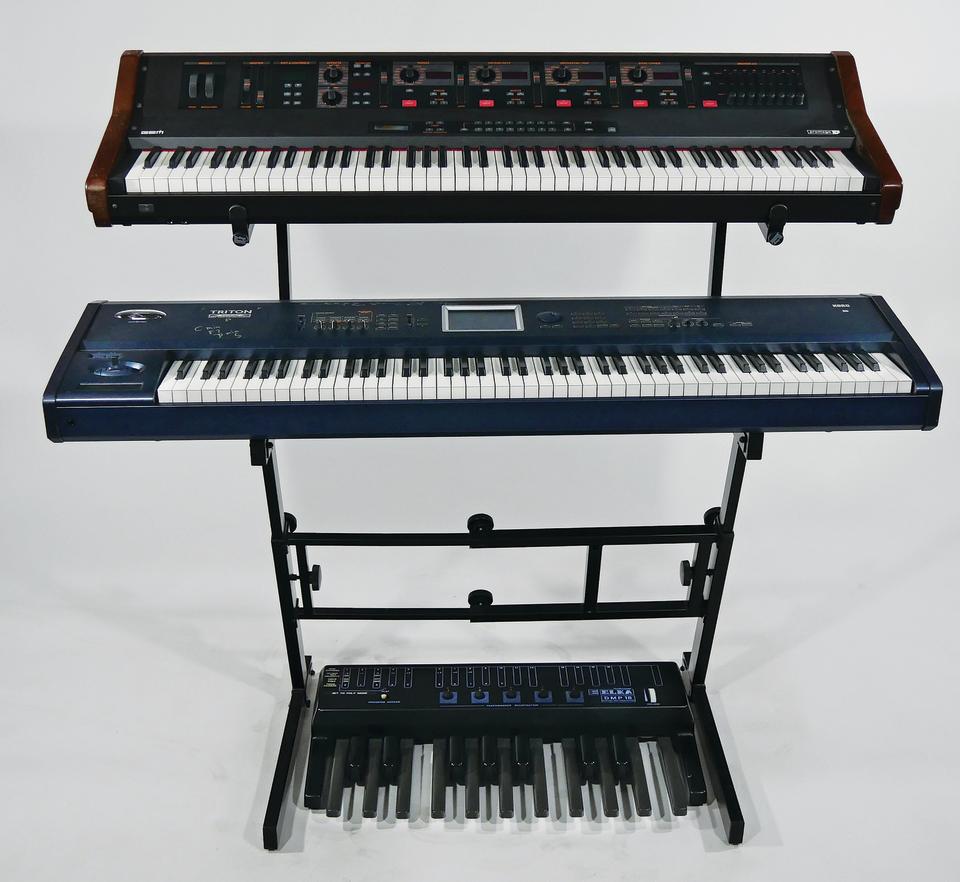
Keith’s organs of choice were the Hammond C3 and the more compact and lightweight Hammond L-100. One of his two customized C3s, the one EMEAPP has and the Met will exhibit, is called the “Tarkus” C3. The other is the “Pictures at an Exhibition” C3, which was eventually updated with MIDI velocity and a solid-state amplifier. Accompanying his organs were twin Leslie 122 cabinets built into a custom road case, which EMEAPP also procured.
EMEAPP’s collection includes other synths that Keith played too, including two Korg Tritons (the Extreme 88 and Rack models), a Studio Electronics SE-1, and a GEM ProMega 3, as well as Elka DMP 18 bass pedals to control the synths, a Bag End system for onstage monitoring, and a Korg SoundLink DAW for recording. Keith frequently relied on his MIDI synths to reproduce his signature sounds, but because the Moog was always onstage with him, the audience was none the wiser.
The Once and Future Moog
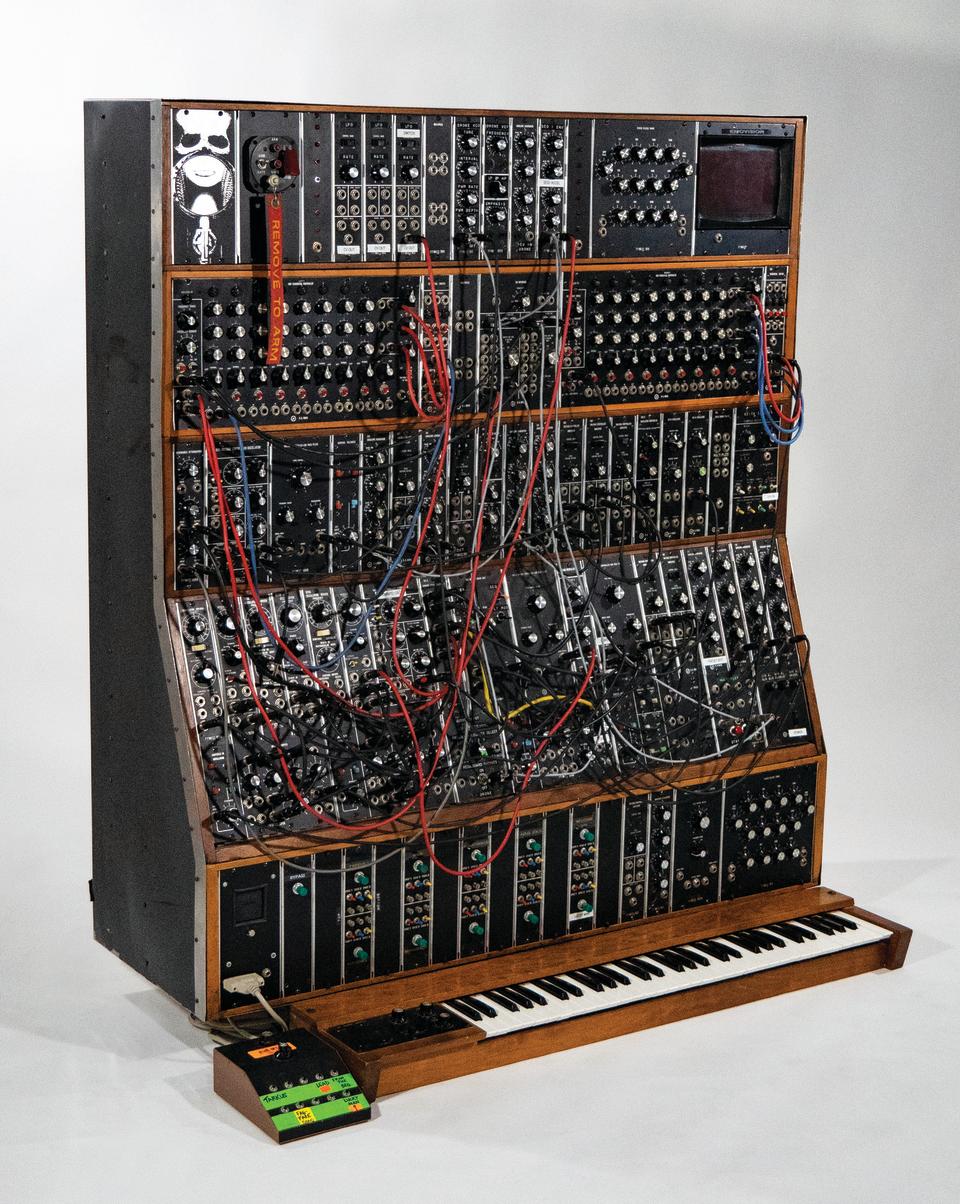
Keyboard tech and former Bob Moog Foundation historian Brian Kehew shares some of his observations, insights, and memories about Keith’s keyboards. His Moog modular is not only the best-known keyboard instrument in the world, he says, “It’s the most recognizable and influential instrument of its kind.” Even though some of Beethoven’s pianos still survive, he notes, most people are unaware of them. (Three are displayed in museums: two in Austria, one in Budapest.)
“No other keyboard player has consistently played the same instrument across the years,” Brian says. “Keith almost always took the Moog out with him, with few exceptions. He knew it was showmanship to take it out. For some tours, many of the sounds came from other modules or synths [and] not the Moog. But when it was working, [it sounded much better] than any other piece of gear onstage.”
Over the years, Keith’s Moog modular was modified, expanded, and on several occasions, fell into complete or partial disrepair. Gene Stopp played a major role in resurrecting it twice in the last 30 years. “In 1990/1991, [keyboard tech] Will Alexander had the machine at his apartment in Santa Monica,” he says. “I went there just about every night to help restore it for the 1992 Black Moon tour. I was on the tour with Will, living on a tour bus, for about three weeks to get it into touring condition. In 2011 I met Brian Kehew, and he mentioned that the machine needed restoration again. I said I would do it, but it would have to be in my garage for family reasons, so it came to my house.”
Brian adds: “Gene and I helped Keith restore the old unit back to concert-ready status, and it gave us a chance to study it all in depth. The upper cabinet was full of ‘show’ modules, mostly empty panels to make the instrument look bigger. We decided to make them all do something, so Gene designed and we added things in. One was a drone voice: two oscillators tunable in an interval, with a filter that slowly rose and fell. This replicated the ‘Aquatarkus’ drone he used to solo over.”
Organ Transplants
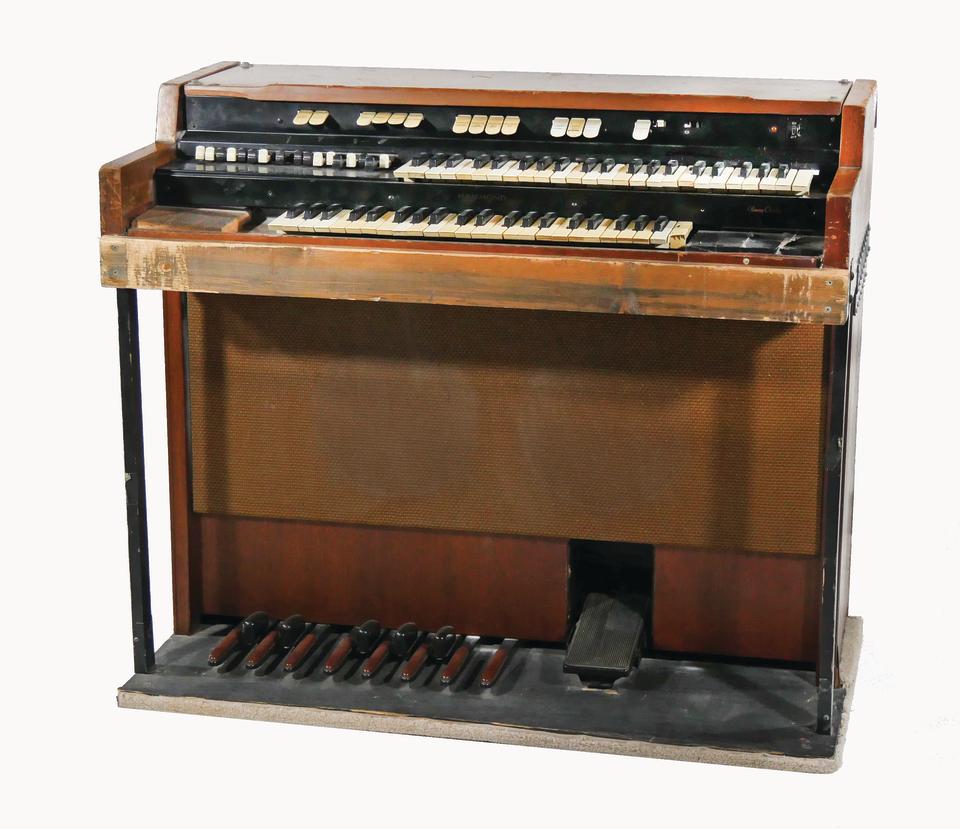
The fire was a surprise to everyone in the band, but the audience thought it was part of the show. Emo later asked me if I could recreate that effect. I immediately said, ‘No!’
For much of Keith’s career, his friend Al Goff was responsible for maintaining his Hammond organs. “Keith used many L-100s over the years, as they had to periodically be replaced due to structural and component failure from onstage knife attacks and other physical damage. The L-100 EMEAPP recently acquired is the same L-100 that ignited during a 1990s show in Boston, when the oil-filled motor-starting capacitor shorted, then exploded, sending hot burning oil that ignited the black fabric organ scrim and the cabinet. The fire was a surprise to everyone in the band, but the audience thought it was part of the show. Emo later asked me if I could recreate that effect. I immediately said, ‘No!’ for many reasons.
“All of Keith’s L-100s over the years were modified and repaired first by his techs in the U.K., and later by his techs in the U.S.,” Al continues. “I had a discussion many years ago with Graham Sutton, former chief engineer, Hammond UK, about Emo’s equipment. Graham told me about many of the repairs and modifications he made in the U.K., which were similar to what we had done in the U.S. to keep the Hammonds functioning.
“One mod that enabled the ‘wailing’ effect of Emo’s various L-100s required a simple rewiring of the power to the L-100 amplifier to keep it [operating] when the L-100 power switch was turned off. However, the capacitor start AC motor used to operate the tonewheel generator would still lose power, slow down, and speed up whenever Emo turned the switch off and on quickly. That simple mod produced an eerie wailing, screaming effect as if the organ was in pain from Emo’s knife attacks.
“Both C3s were rebuilt with high-gain spring reverb units, variable percussion booster control, variable chorus/vibrato control, line in/line out jacks, effects loops, re-filtered and recalibrated tonewheel generator, rebuilt vibrato/chorus line box, and other mods to give Emo more tonal options.”
Tales of the Acquisition
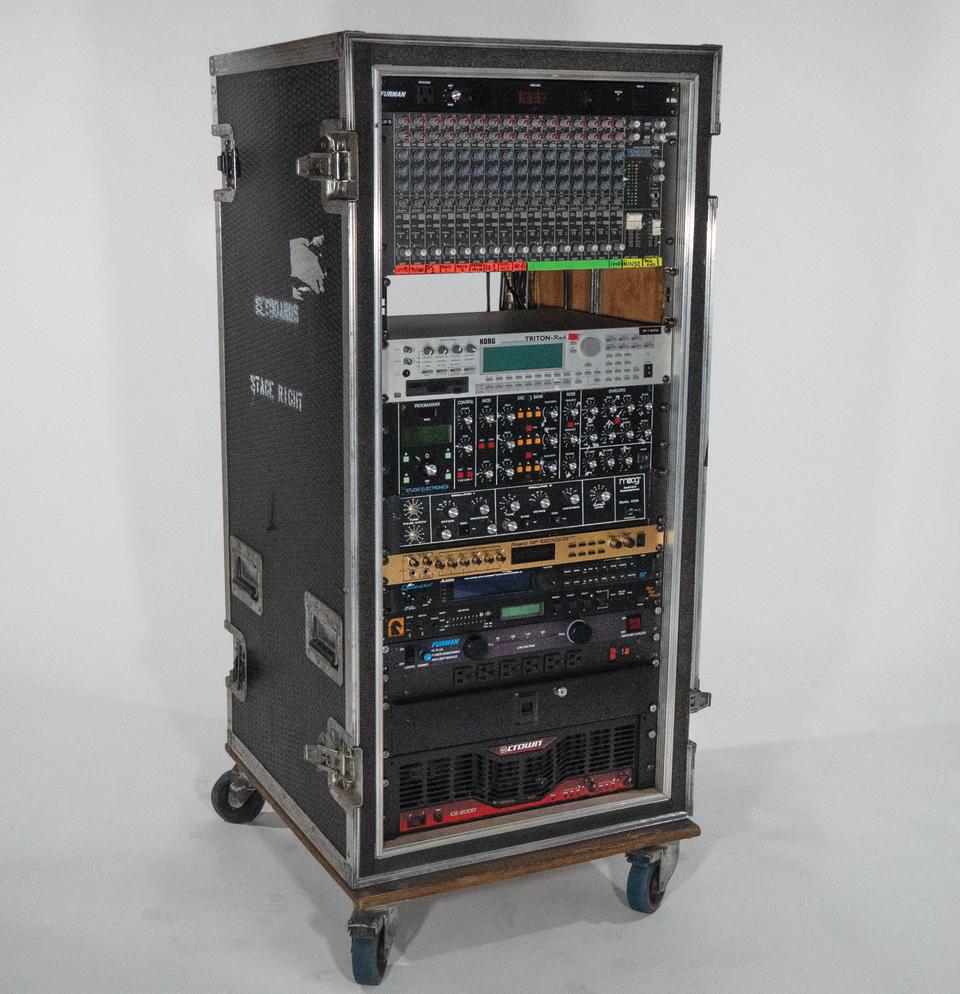
EMEAPP secured most of Keith’s gear, as well as some of his onstage wardrobe, from Julien’s Auctions and numerous private sources. Obviously, though, the most significant addition to their collection is the Moog modular system. According to Gene Stopp, “After a few months of restoration with Brian’s help, it was all better and we moved it into our living room. When Keith left us in 2016, the machine became part of his estate under [Keith’s son] Aaron Emerson. In November of 2017 it was moved into storage, and in December of 2018 it was delivered to its final home, EMEAPP.”
Once Keith’s heirs had decided to sell his Moog modular system, they approached Julien’s Auctions about finding a buyer. At their request, the Bob Moog Foundation’s executive director and Bob’s daughter, Michelle Moog-Koussa, furnished a letter attesting to its value in 2017. Disregarding her advice, Julien’s proposed an opening bid that was much too low. The Emerson estate, understandably, found it unacceptable and asked Michelle to help find a buyer instead.
“At that point the estate asked if the Bob Moog Foundation would consider brokering the sale of the synthesizer,” Michelle explains. “We agreed to do so, and we were tasked with moving the instrument to a secure storage environment, arranging for it to be properly insured, overseeing the creation of a technical specifications summary, and conducting a blind auction.
"A major stipulation was that the auction winner had to share the instrument and not keep it hidden in a private collection. I felt a deep responsibility to find the best possible home for this iconic instrument. Not only was it a symbol of Keith’s virtuosity, musicianship, and showmanship, in addition to being the instrument that brought synthesis to the fore of rock, but for me personally it represented the cosmic synergy between Keith and my father.”
Michelle approached EMEAPP’s founder, Vince Pupillo, Sr., and others about bidding on the synth, and the Bob Moog Foundation staged the auction early in 2018. Vince submitted the winning bid, and after securing funding, EMEAPP took delivery of their prize on December 12. “With its dedication to Keith’s legacy, its mission to share the instruments in their collection, and its ample resources,” Michelle says of the acquisition. “EMEAPP is truly the best suited organization to steward the preservation of Keith’s massive modular and share it with the world over the coming decades.”
The Emerson Legacy

At its peak, Emerson, Lake & Palmer was undoubtedly the band that proved progressive rock could fill stadiums, and much of the credit goes to Keith Emerson.
According to Keith Wechsler, his close friend and longest-serving keyboard technician, “Emerson was constantly pushing musical boundaries. His ability to improvise was astounding, as he was able to draw from an array of rock, classical, and jazz styles to deliver sometimes heart-warming and often blistering solos on piano, organ, and synthesizer.
Although Emo was well-known for his larger-than-life stage antics, I also knew his mild-mannered offstage side as a loving family man with a unique sense of humor
"Although Emo was well-known for his larger-than-life stage antics, I also knew his mild-mannered offstage side as a loving family man with a unique sense of humor, who was a serious composer and musician dedicated to entertaining people.”
Organ tech Al Goff added, “I was fortunate to work with several excellent ELP techs over the many years, and we miss Emo as a performer and friend. I’m very pleased to support EMEAPP, knowing Emo’s Hammond, Leslie, and Moog touring equipment remain together through the efforts of Vince and others.”
Perhaps the most intimate and personal insight comes from Keith’s fiancée, Mari Kawaguchi, who told us, “He was music. He would start composing on a cocktail napkin at a bar, dream a melody and get to the piano at 3 A.M., hear a door squeaking and make music out of it. His whole being resonated music.
“He was not a tech guy. He relied on his entourage to take care of his instruments. He was rather nonchalant and unconcerned about them. It is now for us to preserve them as historical objects. For this, I cannot express enough how grateful I am that someone like Vince acquired the modular Moog and Keith’s other instruments. He is the best qualified to have them, not only for the technical aspects, but for the emotional one. I can see Keith smiling upon him now, saying, ‘Thanks, mate.’ ”

